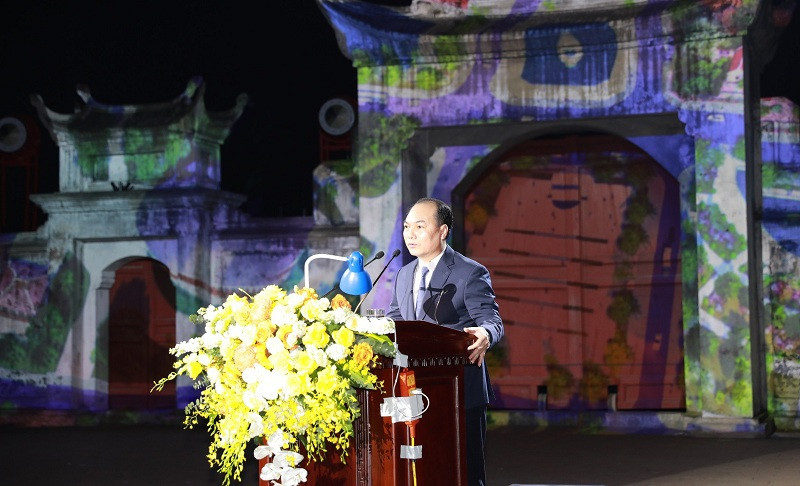The authorities in Hanoi on April 19 celebrated the 1,085th anniversary of the coronation of King Ngo Quyen and the establishment of Co Loa as the nation's capital [939-2024].
King Ngo Quyen is a national hero and the king who restored lasting national independence. In 939, he founded the state in what is now northern Vietnam, proclaimed himself king, and chose Co Loa in Dong Anh District, Hanoi, as the seat of his Ngo Dynasty [939-965].
 |
|
Chairman of Dong Anh District People's Committee Nguyen Anh Dung delivers a speech at the anniversary ceremony. Photos: Hanoimoi |
Speaking at the ceremony, Nguyen Anh Dung, Chairman of Dong Anh District People's Committee, said: "The 1,085th anniversary is an opportunity for us to recall our roots, honor and promote the historical, traditional and revolutionary cultural values of Dong Anh's homeland, as well as the cultural heritage values of the Co Loa Special National Relic Complex, the land that King Ngo Quyen chose as the capital and founded the independent state of the nation."
At the celebration, art programs were performed to recreate the life of King Ngo Quyen and the process of building the country.
Ngo Quyen was born in 898 to a local influential family in Duong Lam Commune, Son Tay Town, Hanoi.
History describes Ngo Quyen as a national talent with "wisdom and courage". After marrying Duong Dinh Nghe's daughter, Ngo Quyen became Duong Dinh Nghe's confidant and was appointed governor of Ai Chau (now Thanh Hoa Province), the Duong family's homeland, in 932.
The victory over the invading forces of the Southern Han Kingdom of China at the Bach Dang River, led by Ngo Quyen, ended over 1,000 years of Chinese rule in Vietnam and ushered in a new era of national independence.
After the victory, Ngo Quyen proclaimed himself king and established the capital in Co Loa, and reigned from 939-944.
Co Loa Citadel is the oldest citadel in Vietnam with long historical significance as it was the ancient capital of two dynasties.
Co Loa Citadel is located about 20 kilometers north of Hanoi. Its name "Co Loa" is derived from the Sino-Vietnamese for "old spiral" because the structure is built in a spiral shape.